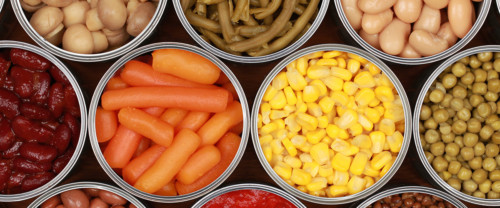
How The Surrey Food Bank Uses Vertical Farming To Feed Those in Need
When most of us think about food banks, images of canned beans and instant soup come to mind. Many underprivileged families can’t afford leafy greens, and most food banks don’t supply fresh produce. The Surrey Food Bank Society in Surrey, British Columbia, knows that low-income families can’t thrive on canned and prepackaged foods alone, so they’re rethinking this whole model.
Here’s how the Surrey Food Bank uses vertical farming to provide fresh leafy greens for up to 80 families every two weeks:
Addressing the Issue of Food Insecurity
“Most people don’t know this, but we have a lot of ‘food deserts’ in Surrey,” says Feezah Jaffer, Associate Executive Director of the Surrey Food Bank Society. “In some areas, you can’t find a grocery store within a 40-block radius, and this creates additional challenges for low-income residents looking to access healthy foods,” she adds.
“The growing medium is recycled water bottles, which is really cool,” she adds. “I call it ‘Gardening 2.0.’”
Since leafy greens are hard to come by, the food bank used to just offer dairy, non-perishables, and root vegetables like carrots and potatoes. “It was challenging for us to purchase fresh produce or get it donated, especially if we had bad weather or a tough growing season,” Jaffer says. In search of a more sustainable model, the food bank turned the problem over to a few students at Simon Fraser University (a public university in Burnaby, British Columbia) who were doing a project on sustainable food development.
Luckily, the SFU students had a bright idea that would quickly grow on (or should we say in?) the Surrey Food Bank: vertical farming.
Sustainable, High-Tech Gardening
One of the SFU students, Ethan O’Brien, runs a company called Living Garden Foods, which installs, sells, and provides training for living farm walls. “We thought this would be a great way for us to provide access to fresh produce, so we applied for a grant through the Vancity Shared Success program,” Jaffer tells Garden Collage. Vancity liked the food bank’s proposal, so they awarded the non-profit with a $6,000 grant to bring this project to life.
The Surrey Food Bank used this money to install two vertical farming towers at one of its distribution centers. “In the vertical towers, we’re growing kale and three types of lettuce that will be harvested in a few weeks,” Jaffer tells Garden Collage. The vertical farming towers are a self-contained hydroponic system, so there’s no weeding or maintenance needed. “All you have to do is start the seedlings,” Jaffer says. “The growing medium is recycled water bottles, which is really cool,” she adds. “I call it ‘Gardening 2.0.’”
Teaching Food Literacy
Whether they’re struggling to pay for housing or coping with mental illness, the low-income families of Surrey face many challenges. These struggles won’t be solved overnight, but the Surrey Food Bank is working hard to address the food insecurity and nutritional challenges that plague the low-income residents of the area.
“The issue of food literacy is huge for us,” Jaffer says of the food bank’s commitment to addressing food insecurity. “Not only do we offer access to healthy foods, but we also provide education around where that food comes from, how it grows, and how to prepare it,” she adds. The Surrey Food Bank even publishes its own recipe book, complete with healthy recipes like homemade baby food and nutritious lunch and dinner ideas.
The organization also provides non-perishables and dairy, but now participants can add a salad to their meals. “A healthy dinner isn’t necessarily Kraft Dinner and tuna,” Jaffer says. “Everyone should have access to fresh vegetables, regardless of their financial situation,” she adds. “It’s important to have that conversation.”
The Surrey Food Bank is located at 10732 City Parkway, in Surrey, British Columbia. For more information, visit the organization’s website.




































